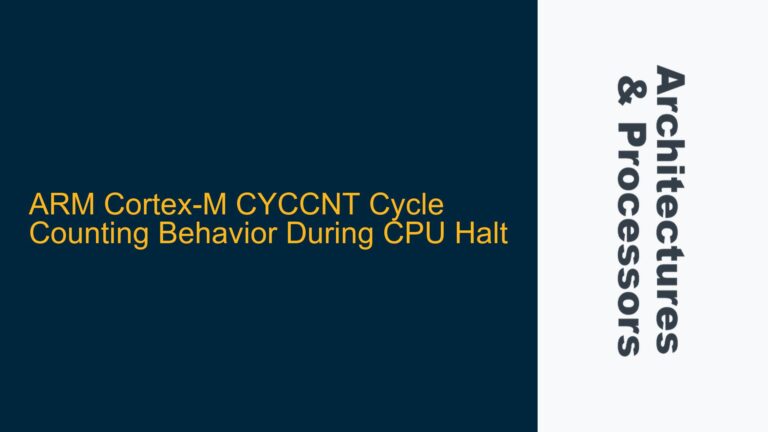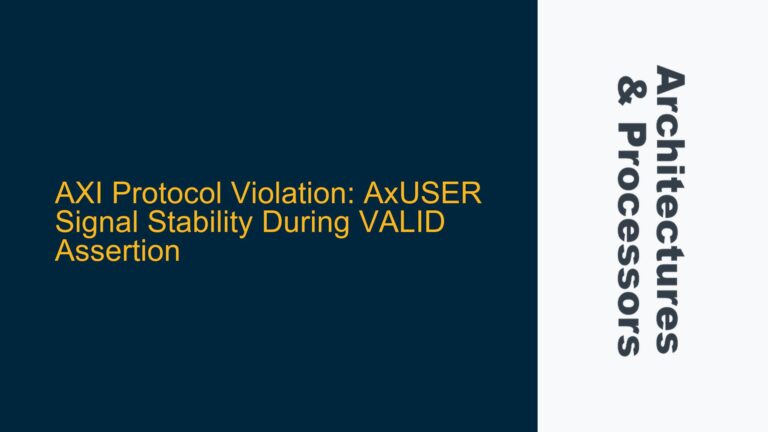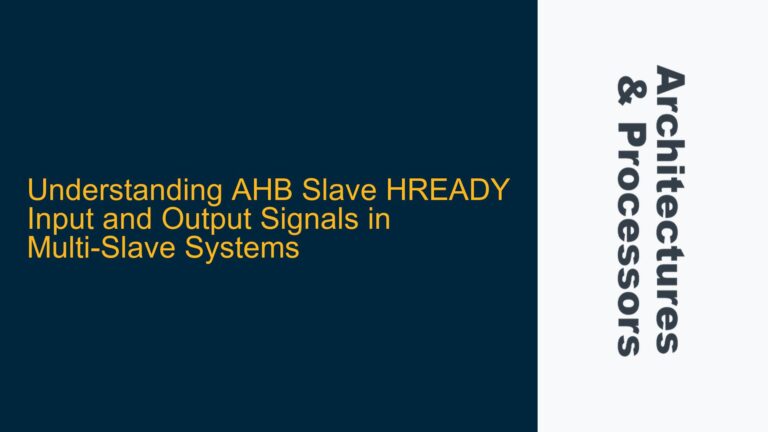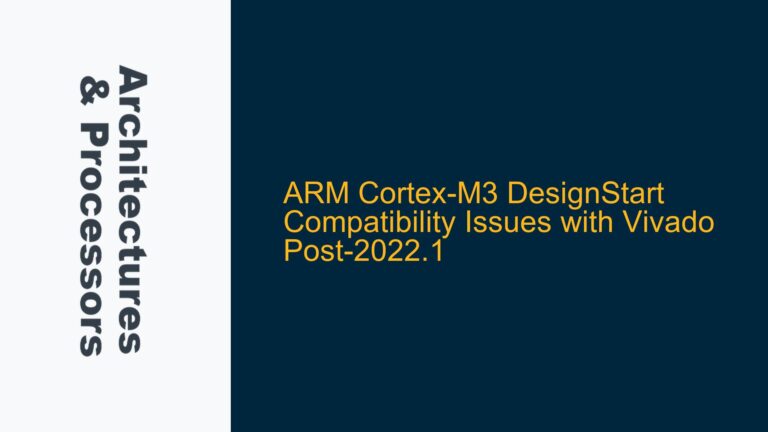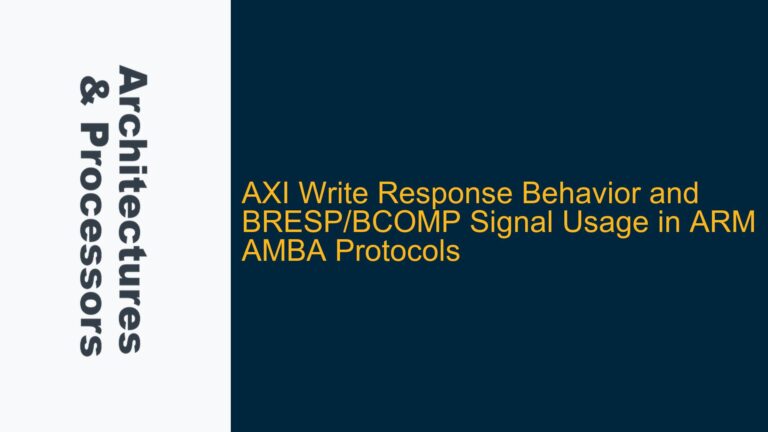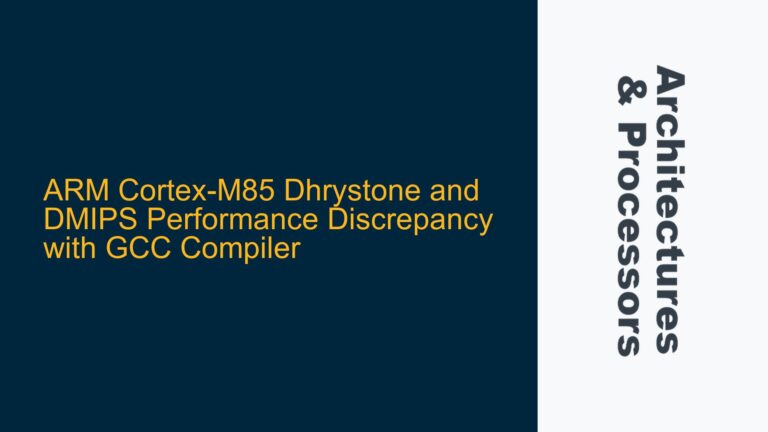ARM Cortex-M4 Cache Coherency Problems During DMA Transfers
The ARM Cortex-M4 processor, renowned for its efficiency in embedded systems, often encounters cache coherency issues when Direct Memory Access (DMA) transfers are involved. These problems typically manifest as data inconsistencies between the processor’s cache and the main memory, leading to erroneous program behavior or system crashes. Understanding the root causes and implementing effective solutions is crucial for ensuring reliable system performance.
Cache coherency issues arise because the Cortex-M4’s cache and the DMA controller operate independently. The cache stores frequently accessed data to speed up processing, while the DMA controller transfers data directly between peripherals and memory without involving the CPU. When the DMA controller modifies memory locations that are also cached, the cache may still hold stale data, leading to inconsistencies.
For instance, consider a scenario where the Cortex-M4 is processing sensor data stored in a buffer. The DMA controller transfers new sensor data into the buffer while the Cortex-M4 reads from it. If the buffer is cached, the Cortex-M4 might read outdated data from the cache instead of the updated data in memory. This discrepancy can cause incorrect sensor readings and potentially hazardous system behavior.
To mitigate these issues, it is essential to understand the underlying mechanisms of cache coherency and the specific interactions between the Cortex-M4’s cache and the DMA controller. The following sections delve into the possible causes of cache coherency problems and provide detailed troubleshooting steps and solutions.
Memory Barrier Omission and Cache Invalidation Timing
One of the primary causes of cache coherency problems during DMA transfers is the omission of memory barriers and improper cache invalidation timing. Memory barriers are instructions that enforce the order of memory operations, ensuring that all previous memory accesses are completed before subsequent ones begin. In the context of DMA transfers, memory barriers are crucial for maintaining cache coherency.
When the DMA controller modifies memory, the Cortex-M4’s cache may not be immediately aware of these changes. Without proper memory barriers, the processor might access stale data from the cache, leading to inconsistencies. Additionally, cache invalidation must be timed correctly to ensure that the cache reflects the most recent data in memory.
Consider a scenario where the Cortex-M4 initiates a DMA transfer to update a buffer. After the transfer completes, the processor must invalidate the corresponding cache lines to ensure that subsequent reads fetch the updated data from memory. If cache invalidation is omitted or performed at the wrong time, the processor might continue to use outdated data, causing errors in the application.
Another common issue is the lack of synchronization between the DMA controller and the Cortex-M4’s cache. The DMA controller operates independently of the CPU, and without proper synchronization mechanisms, the cache might not be updated in time. This can lead to situations where the processor reads incorrect data or writes to memory locations that are being modified by the DMA controller.
To address these issues, it is essential to implement memory barriers and ensure proper cache invalidation timing. The next section provides detailed steps and solutions for achieving cache coherency during DMA transfers.
Implementing Data Synchronization Barriers and Cache Management
Achieving cache coherency during DMA transfers on the ARM Cortex-M4 requires a combination of data synchronization barriers and effective cache management. These techniques ensure that the cache and memory remain consistent, preventing data corruption and system errors.
Data Synchronization Barriers
Data Synchronization Barriers (DSBs) are critical for maintaining cache coherency. A DSB ensures that all memory accesses before the barrier are completed before any subsequent memory accesses begin. In the context of DMA transfers, DSBs should be used to synchronize the DMA controller’s memory operations with the Cortex-M4’s cache.
For example, before initiating a DMA transfer, the Cortex-M4 should execute a DSB to ensure that all previous memory operations are completed. This prevents the DMA controller from modifying memory locations that are still being accessed by the processor. Similarly, after the DMA transfer completes, another DSB should be executed to ensure that the cache is updated with the new data.
Cache Invalidation and Cleaning
Cache invalidation and cleaning are essential for maintaining cache coherency. Cache invalidation ensures that the cache does not hold stale data, while cache cleaning ensures that any modified data in the cache is written back to memory.
When a DMA transfer modifies memory, the corresponding cache lines must be invalidated to ensure that the Cortex-M4 fetches the updated data from memory. This can be achieved using the SCB_InvalidateDCache_by_Addr function, which invalidates specific cache lines based on their memory addresses.
Similarly, if the Cortex-M4 modifies cached data that is also accessed by the DMA controller, the cache must be cleaned to ensure that the modified data is written back to memory. The SCB_CleanDCache_by_Addr function can be used for this purpose.
Example Implementation
Consider a scenario where the Cortex-M4 is processing sensor data stored in a buffer. The DMA controller periodically updates the buffer with new sensor data. To ensure cache coherency, the following steps should be taken:
-
Before initiating the DMA transfer:
- Execute a DSB to ensure that all previous memory operations are completed.
- Clean the cache to ensure that any modified data in the cache is written back to memory.
-
After the DMA transfer completes:
- Execute a DSB to ensure that the DMA transfer is completed.
- Invalidate the cache to ensure that the Cortex-M4 fetches the updated data from memory.
Here is an example implementation in C:
#include "stm32f4xx.h" // Assuming STM32F4 series with Cortex-M4
void DMA_Transfer_Complete_Callback(void) {
// Data Synchronization Barrier to ensure DMA transfer is completed
__DSB();
// Invalidate the cache to fetch updated data from memory
SCB_InvalidateDCache_by_Addr((uint32_t*)sensor_buffer, SENSOR_BUFFER_SIZE);
}
void Process_Sensor_Data(void) {
// Data Synchronization Barrier to ensure all previous memory operations are completed
__DSB();
// Clean the cache to ensure modified data is written back to memory
SCB_CleanDCache_by_Addr((uint32_t*)sensor_buffer, SENSOR_BUFFER_SIZE);
// Initiate DMA transfer
DMA_Initiate_Transfer(sensor_buffer, SENSOR_BUFFER_SIZE);
}
Monitoring and Debugging
Monitoring and debugging cache coherency issues can be challenging due to the non-deterministic nature of cache and DMA interactions. However, several tools and techniques can aid in identifying and resolving these issues.
- Hardware Debuggers: Use hardware debuggers to monitor cache and memory states during DMA transfers. This can help identify situations where the cache holds stale data or where memory accesses are not properly synchronized.
- Cache Profiling: Implement cache profiling to track cache hits and misses. This can provide insights into cache behavior and help identify potential coherency issues.
- Logging and Tracing: Add logging and tracing to the application to track DMA transfer events and cache operations. This can help pinpoint the exact moment when cache coherency is lost.
Best Practices
To minimize cache coherency issues during DMA transfers, follow these best practices:
- Consistent Use of Memory Barriers: Always use memory barriers before and after DMA transfers to ensure proper synchronization.
- Regular Cache Maintenance: Regularly invalidate and clean the cache to prevent stale data and ensure consistency.
- Optimized Buffer Management: Use aligned and padded buffers to avoid cache line conflicts and ensure efficient cache operations.
- Thorough Testing: Conduct thorough testing under various conditions to identify and resolve potential cache coherency issues.
By implementing these techniques and best practices, you can effectively manage cache coherency during DMA transfers on the ARM Cortex-M4, ensuring reliable and efficient system performance.
In conclusion, cache coherency problems during DMA transfers on the ARM Cortex-M4 can be challenging but are manageable with the right approach. By understanding the underlying causes, implementing data synchronization barriers, and maintaining proper cache management, you can prevent data inconsistencies and ensure the smooth operation of your embedded systems.

